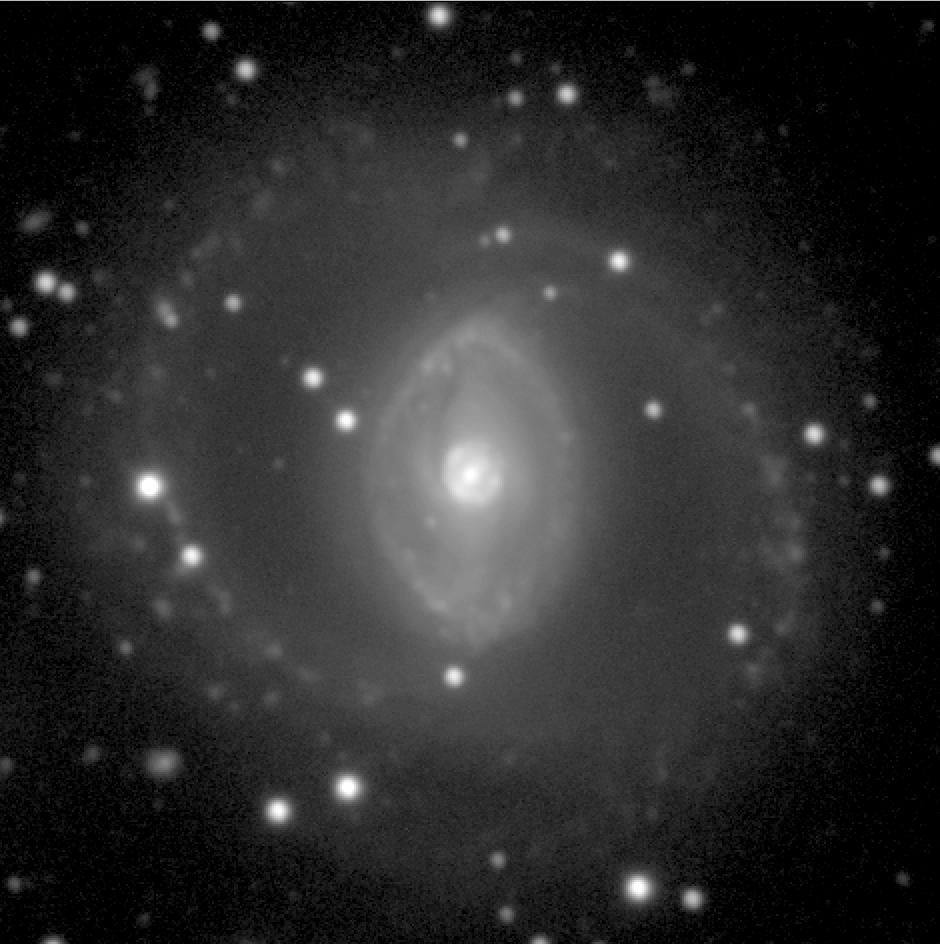

De Vaucouleurs Atlas Type: (R1R2')SB(r)a
Filter: B
Telescope: NTT 3.6-m
North up , East left
Field Dimensions: 2.8 x 2.8 arcminutes
RC3 Type: (R)SAB(r)a
RSA Type: SBab(s)
Surface Brightness Range Displayed: 17.9-27.0 mag per square arcsec
Absolute Blue Magnitude: -21.3
De Vaucouleurs Atlas Description:
An exceptional early-type spiral with strong features. A well-defined bar is seen to fill the major axis of a pointy oval inner ring . In a B-I color index map, the ring is a football-shaped zone of active star formation. For a distance of 48 Mpc, the ring is 12 kpc in diameter. The inclination of the galaxy is low, and thus the highly elongated shape of the inner ring is nearly intrinsic. Strong leading dust lanes are seen in the bar. Inside the bar, an exceptionally bright, nearly circular nuclear ring is found. In the B-I color index map, this feature is very blue and includes several discrete knots. Both the inner ring and the nuclear ring strongly resemble a hydrodynamic gas flow model from Regan and Teuben (2004). This model (see printed Atlas) shows a pointed oval inner ring and circular nuclear ring with offset leading dust lanes. The solid curve is the largest x1 orbit in the model that does not loop.
Caption: A hydrodynamic gas flow model from Regan and Teuben (2004) that strongly resembles NGC 6782. The model has a strong bar with a major-to-minor axis ratio of 2.5.
In an I-band image, the nuclear ring is crossed by a conspicuous secondary bar that is tipped behind the major axis of the primary bar . This type of ``trailing nuclear bar" brought attention to the random alignments between secondary and primary bars (Buta and Crocker 1993).
Outside the inner ring , a faint R1' outer pseudoring is found. In an H-alpha map (Crocker, Baugus, and Buta 1996), the HII regions follow the leading edges of the R1' feature and continue into a partial R2', similar to NGC 1326 . The HII regions bunch up near the major axis of the inner ring , due to the signficant eccentricity of the ring. This sensitivity of the HII region distribution to intrinsic ring shape was discussed by Buta (2002) and is highlighted further in the printed Atlas.